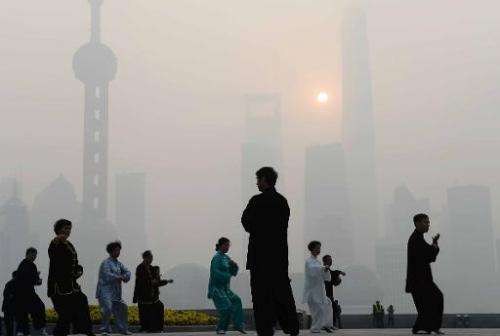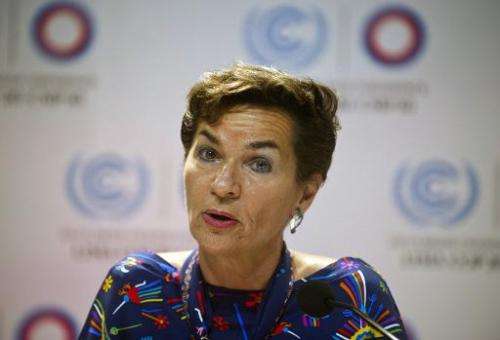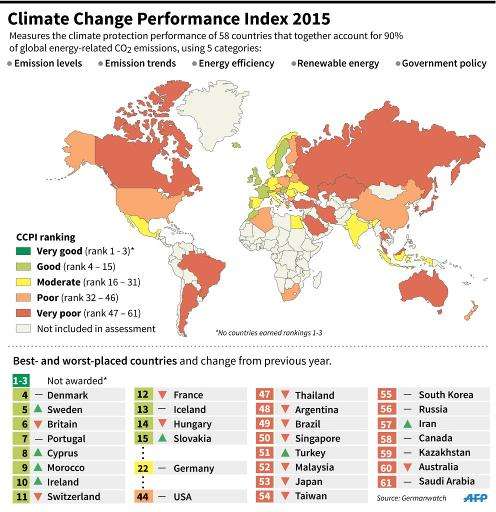What now for the Paris accord?

Four years ago, the world's nations vowed to forge a pact by the end of 2015 that would tame climate change and bequeath a safer planet to future generations.
Operational from 2020, the accord would curb heat-trapping carbon emissions and hold global warming under two degrees Celsius (3.6 degrees Fahrenheit).
And it would crank out hundreds of billions of dollars (euros) in help for climate-vulnerable, poor countries.
But an exhausting negotiation round in Lima, designed to ease the way to the deal to be inked in Paris in 12 months' time, served as a reminder of what happens when soaring visions encounter gritty reality.
In less than two weeks, the annual talks of the UN Framework Convention on Climate Convention (UNFCCC) retreated from high-minded rhetoric to familiar nit-picking and finger-pointing.
Thirty-two hours beyond their scheduled close, the negotiations were saved thanks to a compromise that gutted the text of its most ambitious measures for emissions curbs and aid.
The row casts a shadow over the three rounds of talks scheduled ahead of the November 30-December 11 finale in Paris, say observers.
"There are deep and long-standing divisions on major issues including climate finance, which countries are more obligated to take action to reduce emissions, and whether to give greater priority to adaptation" aid, said Alden Meyer with the US-based Union of Concerned Scientists (UCS).
"These divisions nearly derailed the process in Lima; if they aren't addressed, they threaten to block an agreement in Paris."
The biggest source of conflict in Lima was about fairness among the UNFCCC's 196 parties.
Enshrined in the UNFCCC's charter at its founding 22 years ago, is a principle known as "common but differentiated responsibility," or CBDR.
CBDR is interpreted by developing countries as meaning that industrialised countries should bear more of the burden for curbing fossil fuel emissions.
After all, goes this argument, they were the first to benefit from fossil fuels to power their rise to prosperity.

Asking poor countries which did not have this historic advantage to shoulder the burden equally would be unfair, they argue.
Rich countries, for their part, demand stronger efforts from everyone to reduce greenhouse gases.
Further complicating matters, developing countries demanded that financial aid and technical help, and not just carbon cuts, feature in national pledges designed to be at the core of the 2015 pact.
This was why, after the rhetoric in Lima had faded and the talks got serious, things got difficult.
"The mistrust from Peru will be a poison in these negotiations," said Asad Rehman of Friends of the Earth.
"Rich developed countries have to be dragged kicking and screaming to budge an inch. When you send a signal you are not serious about reducing emissions by delaying targets and fudging on finance, then no-one else will be serious either."
Elliot Diringer of a US thinktank, the Center for Climate and Energy Solutions, said Lima showed up fears among some developing countries that CBDR is losing its sacred status.
One reason for this was last month's carbon-cutting agreement between China and the United States, the world's two biggest emitters, he suggested.
It pointed to an impending shift in the rich-world, poor-world perspective on climate.
"It's no surprise that in Lima a lot of developing countries pushed back. Striking a new balance between developed and developing nations will clearly be one of the toughest pieces next year in Paris."

Spider's web
Adding to next year's problems is the DNA of decision-making under the nation-state system, which is poorly designed to cope with a global environmental crisis.
As decisions in the UNFCC have to be made by consensus, a single country—a carbon polluter, a climate victim or fossil-fuel exporter—can easily scupper, delay or dilute a deal to defend its own interests.
Thus, over more than two decades, the UNFCCC's agenda has become a sprawling spider's web of emissions cuts, adaptation funds, transparency, technological transfer, compliance, and so on.
No single issue can be addressed separately. Touch one strand of the web and others vibrate, for all are connected.
Even if its many problems disappoint the high expectations for Paris, the UN process will survive, said analysts.
"Lima shows that a multilateral agreement of nation states remains important," said Jennifer Morgan of the World Resources Institute (WRI), a policy group.
"However, we know that all efforts are needed on all levels to address this issue," she said, pointing to growing interest in bilateral, regional or industry-wide agreements on climate change.
"It is not 'either-or'."
© 2014 AFP




















